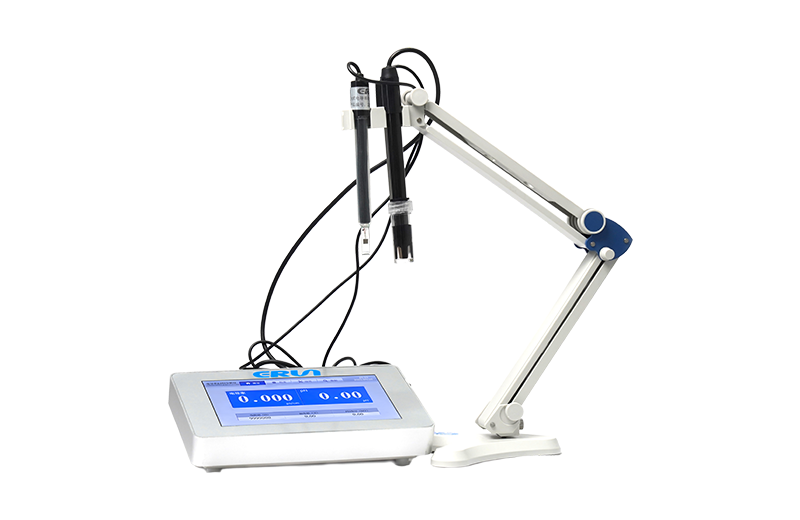Sodium ions are critical in biological, environmental, and industrial contexts, influencing everything from human health to food quality and water safety. Measuring sodium ion (Na⁺) concentration accurately is essential for ensuring compliance with regulations, maintaining product quality, and protecting public health. Sodium ion testers, particularly those using ion-selective electrodes (ISE), offer a reliable, efficient way to achieve this. This article explores the principles behind sodium ion testers, their applications, types, international standards, benefits, limitations, and emerging trends, providing a comprehensive guide for professionals and enthusiasts in analytical chemistry.

Sodium ion testers are analytical instruments designed to measure the concentration of sodium ions in aqueous solutions, such as water, food extracts, or biological fluids. These devices are vital in settings where precise sodium levels are critical, such as ensuring drinking water safety or monitoring sodium in processed foods. Most sodium ion testers rely on ion-selective electrodes, which are highly sensitive to sodium ions and provide rapid, accurate measurements even in complex samples.
Sodium ion testers operate using potentiometry, a method that measures the electrical potential difference between two electrodes to determine ion concentration. The key components include:
Ion-Selective Electrode (ISE): Features a membrane, often made of glass or polymer, that selectively allows sodium ions to pass, generating a potential proportional to the sodium concentration.
Reference Electrode: Typically a silver/silver chloride (Ag/AgCl) electrode immersed in a stable electrolyte solution, providing a constant reference potential.
Internal Reference Solution: A solution within the ISE containing a known sodium concentration to stabilize the measurement.
Potentiometer: A high-impedance device that measures the potential difference and converts it into a sodium ion concentration based on the Nernst equation.
The Nernst equation governs the relationship between the potential difference and the ion concentration, ensuring accurate measurements. Calibration with standard solutions (e.g., 150 ppm and 2000 ppm sodium) is essential to account for variations in sample conditions and ensure precision. Ionic strength adjusters (ISAs) may be added to samples to minimize interference from other ions, such as potassium or ammonium.
Sodium ion testers are used across diverse industries due to the widespread importance of sodium:
Water Quality Monitoring: Sodium levels in drinking water, wastewater, and industrial water are monitored to ensure compliance with guidelines, such as those recommending sodium levels below 20 mg/L for low-sodium diets (Health Canada Guidelines).
Food and Beverage Industry: Sodium content in foods like soups, sauces, and snacks is measured to ensure accurate nutritional labeling and compliance with dietary standards, as high sodium intake is linked to health issues.
Medical Diagnostics: Sodium levels in blood or urine are tested to diagnose conditions like hyponatremia or hypernatremia, critical for patient care.
Environmental Monitoring: Sodium levels in soil and water are assessed to evaluate salinity impacts on ecosystems and agriculture, particularly in areas affected by road salt or irrigation.
Pharmaceuticals: Sodium is measured in drug formulations to ensure stability and safety, as it can affect the efficacy of certain medications.
These applications highlight the versatility of sodium ion testers in addressing critical needs across multiple sectors.

Sodium ion testers come in various forms, each suited to specific applications:
Benchtop Meters: High-precision instruments used in laboratories, offering features like data logging, temperature compensation, and high accuracy for detailed analysis.
Portable Meters: Compact devices designed for field use, ideal for on-site testing in environmental or agricultural settings due to their ease of use and mobility.
Online Systems: Integrated into industrial processes for continuous monitoring, providing real-time data for applications like water treatment or food production.
Each type balances accuracy, portability, and functionality to meet the demands of different environments.
While no single international standard is dedicated solely to sodium ion measurement using ISE, several standards guide the use of ion-selective electrodes and related methods:
ASTM D4127: Provides terminology and guidance for ion-selective electrode measurements in water, wastewater, and brines, ensuring consistent practices (ASTM D4127).
ISO 10523:2008: Covers pH measurement in water, often performed alongside sodium testing, and provides general guidelines for electrochemical measurements (ISO 10523).
General Analytical Practices: Laboratories follow standard operating procedures (SOPs) that include calibration with certified reference materials, use of ISAs, and participation in proficiency testing to validate results.
These standards and practices ensure that sodium ion measurements are reliable and comparable across different laboratories and applications.
Several methods are available for measuring sodium ions, each with distinct advantages and limitations:
| Method | Principle | Advantages | Limitations |
|---|---|---|---|
| Ion-Selective Electrode (ISE) | Potentiometric measurement using selective membrane | Fast, simple, portable, wide range | Interference from other ions, requires calibration |
| Atomic Absorption Spectroscopy (AAS) | Absorption of light by sodium atoms | High sensitivity, minimal interference | Requires sample preparation, complex instrumentation |
| Ion Chromatography (IC) | Separation and detection of ions | High accuracy, multi-ion analysis | Time-consuming, requires skilled operators |
| Flame Photometry | Emission of light by excited sodium atoms | Rapid, sensitive | Interference from other alkali metals, limited to liquids |
ISE-based sodium ion testers are favored for their simplicity and ability to handle small sample volumes, making them suitable for both laboratory and field applications.
Benefits and Limitations
Accuracy and Speed: ISE testers provide precise measurements quickly, often within seconds, enabling rapid decision-making.
Versatility: They can measure sodium in various sample types, including liquids, solids, and viscous materials, with minimal sample preparation.
Cost-Effectiveness: Compared to methods like AAS or IC, ISE testers are relatively affordable and require less complex equipment.
Portability: Portable models allow for on-site testing, reducing the need for sample transport to laboratories.
Interference: Ions like potassium or ammonium can affect readings, requiring the use of ISAs to minimize errors.
Maintenance: Electrodes need regular cleaning and calibration to maintain accuracy, which can be time-consuming.
Sample Matrix Effects: Complex samples may require dilution or additional preparation to ensure accurate results.
Despite these challenges, the benefits of sodium ion testers make them a cornerstone of analytical chemistry.
Advancements in technology are enhancing the capabilities of sodium ion testers:
Miniaturization: Development of micro- and nano-scale ISEs for applications in microfluidics and point-of-care diagnostics.
IoT Integration: Wireless connectivity for real-time data transmission and remote monitoring, improving efficiency in industrial settings.
Improved Selectivity: New membrane materials reduce interference from other ions, enhancing measurement accuracy.
Automated Systems: Automated calibration and diagnostic features minimize human error and streamline laboratory workflows.
These trends promise to make sodium ion testers more accessible, accurate, and integrated into modern analytical systems.
Sodium ion testers are vital tools for ensuring the quality and safety of water, food, and medical samples. By leveraging ion-selective electrodes, these devices provide rapid, accurate measurements that support compliance with regulations and protect public health. Guided by international standards and best practices, sodium ion testers are indispensable in laboratories and industries worldwide. As technology advances, these testers will continue to evolve, offering greater precision and versatility for a wide range of applications.